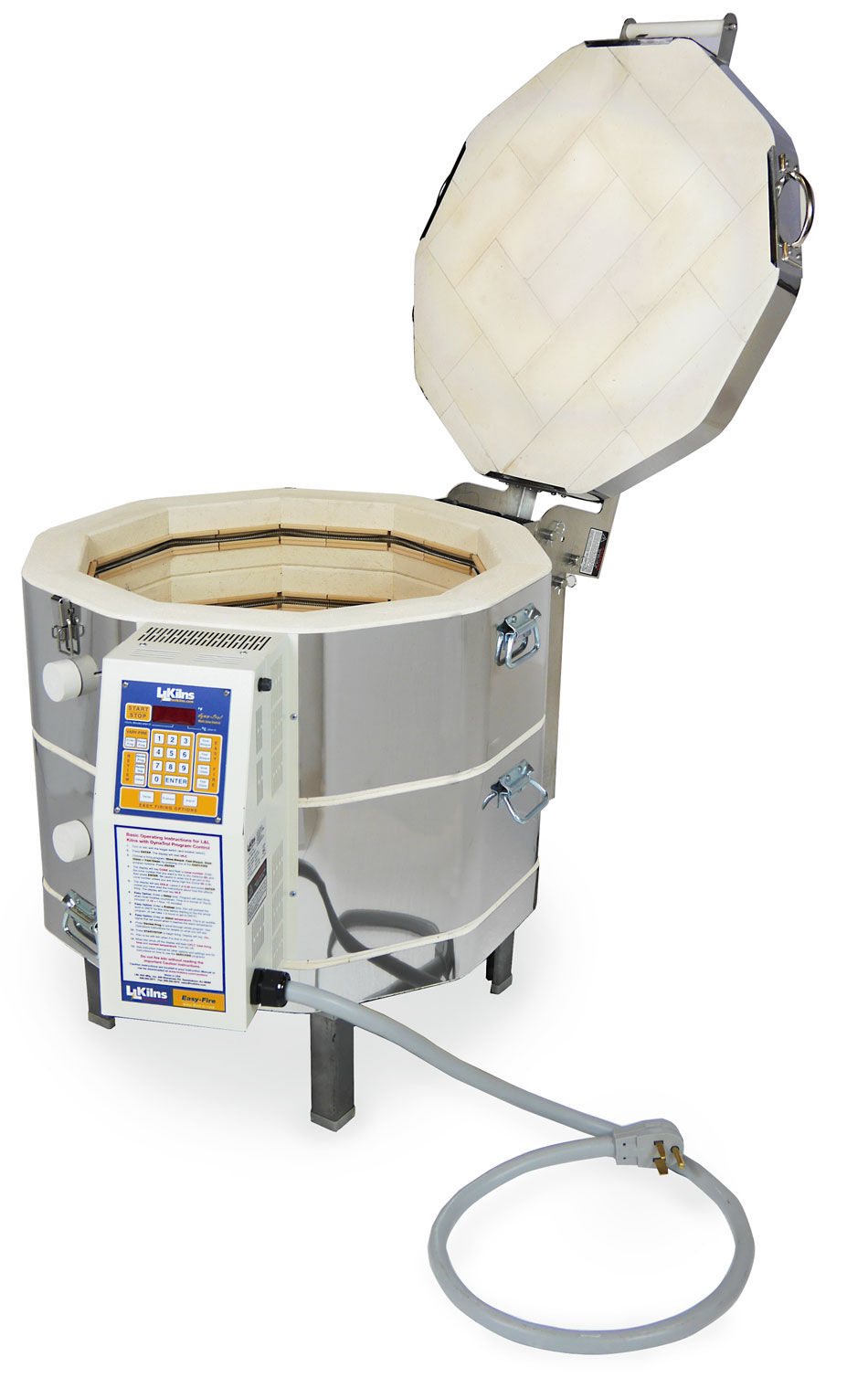Operation Home Studio: Holy Crab Apples I Bought a Kiln!
- Danielle Hawk
- Jul 10, 2018
- 4 min read
Updated: Jul 10, 2018
BIG NEWS!
4.7 cubic feet of news to be exact! That's right people I just, as in just, ordered my own kiln!
After a lot of research I landed on the E23S-3 by L&L Kilns from Sheffield Pottery Supply

Now here is the run down of everything that lead me to L&L.
Skutt vs. L&L vs. ConeArt
Lowest cost with vent: 2,203*
Pros:
- Lower starting price point
- Available in both 2.5 and 3 inch soft brick
Cons:
- Based on the west coast (potentially more difficult to get replacement parts/services)
- Multiple forums mention instances of the sheet metal rusting
*Before tax and shipping
Lowest cost with vent: 2,398*
However I opted to purchase via Sheffield Pottery because after factoring in freight and lift gate service their overall cost was lower.
Pros:
- Comes in both 2.5 and 3 inch soft brick
- Comes with L&L signature hard ceramics element holders which many ceramicist proclaim prolongs the life of their heating elements and the insulating soft brick
- L&L is based in PA and there are local experts to help with replacement parts and services.
Cons:
- Higher price point than Skutt
- No floor elements
*Before tax and shipping
Lowest cost with vent: 2,812*
Pros:
- Comes with ConeArt signature double wall insulation. 1" layer of hard brick followed by 2.5" of soft brick. Supposedly cuts down significantly on exterior heat.
- Floor elements for a more even firing.
- Peter Pincus endorsed
Cons:
- Based in Canada
- Significantly lower number of retailers carry the kilns/parts
* Before tax and shipping
Summary:
Taking the advise my father gave me a long time ago when deciding between products; you probably don't need the most expensive, and you don't want the cheapest, always go with the middle.
In reality if money weren't an obstacle I would have gone with the ConeArt, despite their location. Every ceramicist testimonial I read was a glowing endorsement, and I've wanted one since Ryan Greenheck told a workshop I attended that he has been firing his to cone 10 for over two years without replaceing the elements. That's not to say L&L doesn't make a superior product, they have garnered an almost cult following, and I am sure I will be firing mine for years to come, but I won't forget about ConeArt the next time I'm in the market.
Volts, Amps, and Outlets
For a more detailed electrical outline please check out my previous blog post. Here
Since my last post I had a professional electrician come in and install of 240V, 50Amp, single phase, 6-50 plug outlet. I was able to go with a 50 amp breaker opposed to 60 amps, because of the smaller size of the E23S-3.
**Shout out to my Dad for the connections**
Insurance
For the time being I am for all intents and purposes a "hobby potter", a descriptor which I hate, which means the kiln does not need to be insured through business insurance. However, it does still need to be insured. The good news is a quick call to our insurance agent and a few detailed emails back and forth, and the kiln will not increase our home insurance. It's more or less just considered another appliance. They did suggest we take another look at the policy and make sure there is enough possession coverage since it is such a big ticket item.
All of the reading I did online prior to calling seemed to match our experience. There were some varying testimonials from states outside of Maryland, and people under different insurance companies. So shout out to MD State Farm agents for have the local "hobby potters" back.
Asbestoes from Asbest
The next step was to make sure that the kiln would be operating under safe conditions. The basement in our home was/is fully carpeted, not exactly ideal material to run a kiln on.
One small patch of peeled up carpet and we could tell we're in for full blown 1954 asbestos tiling. You know the kind it looked like this, except now we don't let babies crawl around on it because it looks likes this.
So here is everything we have learned about asbestos.
First- Asbestos tile is moderately safe as long as there is no damage to the tile. If the tile is cracked, chipped, broken, or even scratched it is considered "friable". Friable basically means that it can be crumbled and thus become airborne, which is when the big bad asbestos does it's damage.
Second- You can, and a lot of people did, contain potential asbestos issues by covering the tile with "a continuous flooring" aka carpet or linoleum. The idea is that the continuous material keeps the asbestos from being able to become airborne.
Third- Asbestos comes from a town called Asbest in Russia. Here is a video Vice did on the town of Asbest where they still mine and sell asbestos to this day. Bonus fun fact, when President Trump came into office the EPA was no longer allowed to investigate the effects of asbestos already used in buildings, and new asbestos construction is not banned.
Last- You can remove asbestos tiles on your own, but it is A LOT of work. Shout out to my studio partner Neal Hassel for doing the research, and finding us a company to abate our asbestos at a reasonable price, and short time frame. The wonderful people at K&K Environmental Services LLC are working as I type... I can't see anything but it sounds like it is going well.






Comments